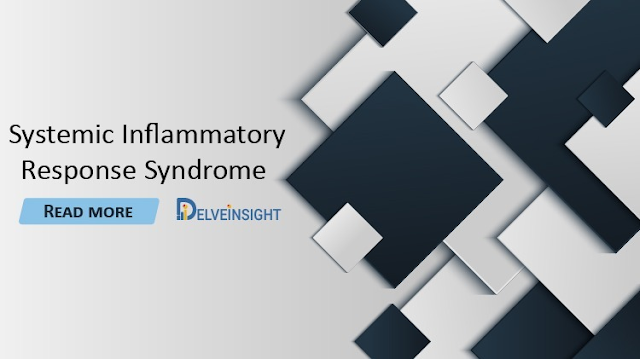Systemic inflammatory response syndrome (SIRS) is an exaggerated defense response of the body to a noxious stressor to localize and then eliminate the endogenous or exogenous source of the insult. It is a clinical syndrome characterized by systemic inflammation and widespread tissue injury and can be defined by several clinical variables including temperature >38°C or <35°C, heart rate >90 beats/min, respiratory rate >20 breaths/min or PCO2 < 32 mmHg, and WBC > 12000 cells/mm or <4000 cells/mm.
It involves the release of acute-phase reactants which are direct mediators of widespread autonomic, endocrine, hematological and immunological alteration in the subject. Even though the purpose is defensive, the dysregulated cytokine storm has the potential to cause massive inflammatory cascade leading to reversible or irreversible end-organ dysfunction and even death.
SIRS can result from insults such as trauma, thermal injury, pancreatitis, autoimmune disorders, and surgery. When SIRS occurs as a result of infection, it is termed sepsis. Sepsis came to be defined as presence or presumed presence of infection accompanied by evidence of SIRS. Severe sepsis is present when sepsis is accompanied by organ hypoperfusion or dysfunction of one or more organs such as acute renal failure, thrombocytopenia or disseminated intravascular coagulation (DIC), jaundice, acute respiratory distress or delirium. Hypotension refractory to intravenous fluid in the presence of sepsis signifies septic shock.
Despite having a relatively common physiologic pathway, numerous triggers exists for SIRS and patients present in a variety of manners. A thorough history is critical in determining the proper evaluation of the patient with SIRS as the differential diagnosis is extremely broad. The clinician’s history should be focused around the chief complaint with a pertinent review of systems. Patients should be questioned regarding constitutional symptoms of fever, chills and night sweats which may help differentiate infectious from noninfectious etiologies.
The occurrence of SIRS is very high, affecting one-third of all in-hospital patients, and >50% of all ICU patients; in surgical ICU patients, SIRS occurs in >80% patients. Trauma patients are at particularly high risk of SIRS, and most these patients do not have infection documented.
Extremes of age (young and old) and concomitant comorbidities probably negatively affect the outcome of SIRS. Young people may be able to mount a more exuberant inflammatory response to a challenge than older people and yet may be able to better modify the inflammatory state (via the counter-inflammatory response syndrome [CARS]). Young people have better outcomes for equivalent diagnoses.
There is no drug of choice for the treatment of SIRS. Medications target specific diagnosis, preexisting comorbidities and prophylaxis regimens for prevention of complications. Medical care includes the prompt initiation of pertinent laboratory testing and imaging studies after obtaining a history and performing a physical examination. Treatment should be focused on possible inciting causes of SIRS (i.e. appropriate treatment of acute myocardial infarction will differ from the treatment of community acquired pneumonia or pancreatitis, etc.).
Hypotensive patients should receive adequate resuscitation with intravenous fluids and if still hypotensive, vasopressor agents should be administered with carefully hemodynamic monitoring. All patients should have adequate intravenous access and often require 2 large bore IV’s or a central venous catheter.
In recent years, much basic science research has investigated the predisposing factors, initiation, propagation, and resolution of Gram-negative sepsis, endotoxaemic shock, and the newly defined entity of systemic inflammatory response syndrome (SIRS).
Recently, the widespread nosocomial isolation of new antibiotic-resistant strains of endotoxin-producing bacteria has further complicated management. For these reasons, there is much interest in alternative treatment modalities which focus upon the endotoxin molecule itself and the systemic inflammatory response it provokes via the cytokine, complement, and coagulation cascades. Recent experimental approaches to the therapy of sepsis and SIRS are discussed in light of each step in the complex inflammatory cascade and in comparison to traditional approaches to prevention and therapy of Gram-negative bacteremia and septic shock.
The current therapeutic landscape of Systemic inflammatory response syndrome (SIRS) in the US is driven by several approved therapies. The Systemic inflammatory response syndrome market is estimated to increase by 2030.
Recent experimental approaches to the therapy of sepsis and SIRS are discussed in light of each step in the complex inflammatory cascade and in comparison to traditional approaches to prevention and therapy of Gram-negative bacteremia and septic shock.
The dynamics of the Systemic inflammatory response syndrome market is anticipated to change in the coming years owing to the improvement in the rise in number of healthcare spending across the world. Key players, such as CalciMedica, Athersys and some others are involved in developing drugs for SIRS. The launch of potential emerging therapies such as Auxora (CalciMedica), MultiStem (Athersys), CYT107 (RevImmune) and others are expected to change the treatment landscape during the forecast period (2021–2030).
Original Source:- Systemic Inflammatory Response Syndrome Market

Comments
Post a Comment